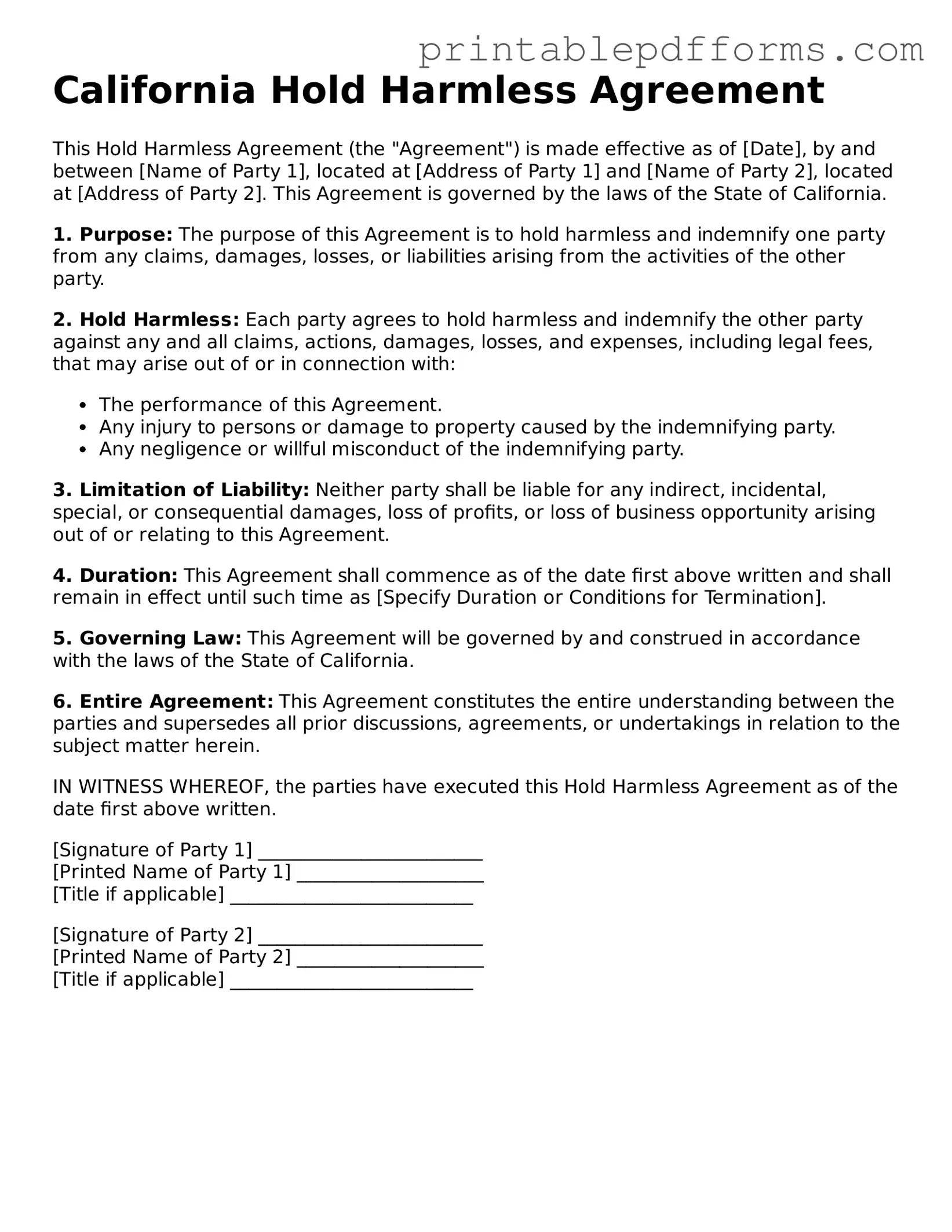California Hold Harmless Agreement
This Hold Harmless Agreement (the "Agreement") is made effective as of [Date], by and between [Name of Party 1], located at [Address of Party 1] and [Name of Party 2], located at [Address of Party 2]. This Agreement is governed by the laws of the State of California.
1. Purpose: The purpose of this Agreement is to hold harmless and indemnify one party from any claims, damages, losses, or liabilities arising from the activities of the other party.
2. Hold Harmless: Each party agrees to hold harmless and indemnify the other party against any and all claims, actions, damages, losses, and expenses, including legal fees, that may arise out of or in connection with:
- The performance of this Agreement.
- Any injury to persons or damage to property caused by the indemnifying party.
- Any negligence or willful misconduct of the indemnifying party.
3. Limitation of Liability: Neither party shall be liable for any indirect, incidental, special, or consequential damages, loss of profits, or loss of business opportunity arising out of or relating to this Agreement.
4. Duration: This Agreement shall commence as of the date first above written and shall remain in effect until such time as [Specify Duration or Conditions for Termination].
5. Governing Law: This Agreement will be governed by and construed in accordance with the laws of the State of California.
6. Entire Agreement: This Agreement constitutes the entire understanding between the parties and supersedes all prior discussions, agreements, or undertakings in relation to the subject matter herein.
IN WITNESS WHEREOF, the parties have executed this Hold Harmless Agreement as of the date first above written.
[Signature of Party 1] ________________________
[Printed Name of Party 1] ____________________
[Title if applicable] __________________________
[Signature of Party 2] ________________________
[Printed Name of Party 2] ____________________
[Title if applicable] __________________________
